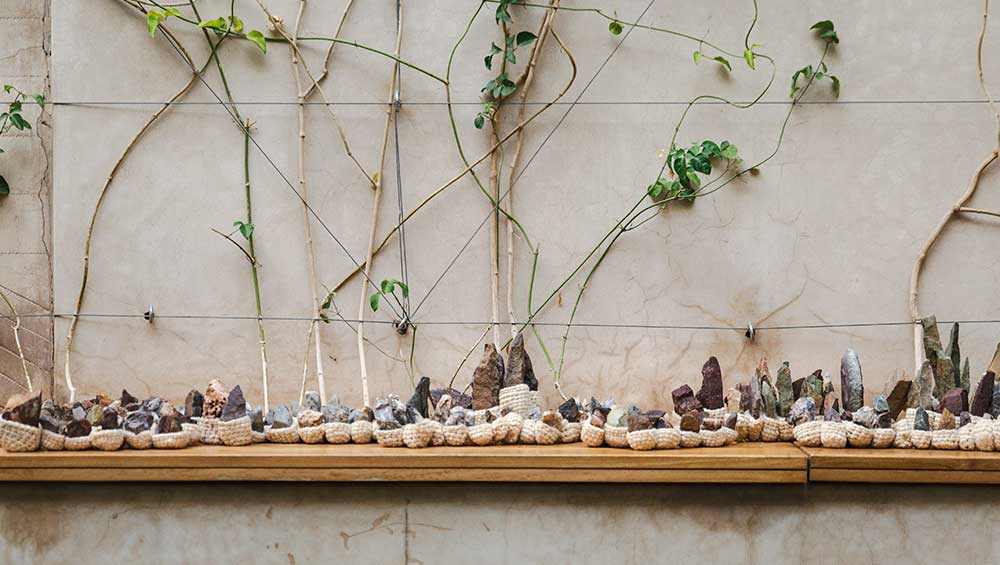
Amina Agueznay. Reg, 2024. Installation, Natural undyed wool, stones from Souss Massa, cotton thread. Hand crochet and sewing, variable dimensions. Photo: Ayoub Al Bardii.
IZZA, Marrakech
1-12 February 2025
by ALLIE BISWAS
As the first international fair founded to promote contemporary African art, it was only right that 1-54 make itself known on the African continent. It took some time: the Marrakech edition of the annual event was launched six years ago, following its inauguration in London in 2013 and a New York iteration in 2015, but the fair’s presence in the Moroccan city has been gamechanging. Bringing an international audience of collectors, artists and journalists to Marrakech every February, 1-54 has helped to turn the city into a contemporary art destination.
The fair is just one component of an arts scene in the city that has been fruitful for several years, incorporating established commercial galleries, including Comptoir de Mines Galerie, La Galerie 38 and Malhoun, as well as newer cultural centres such as DaDa. The Museum of African Contemporary Art Al Maaden reopened this month after a refit following the 2013 earthquake, unveiling an exhibition that showcases 150 works from an extensive collection built over the last 40 years by Moroccan businessman Alami Lazraq and his son Othman.
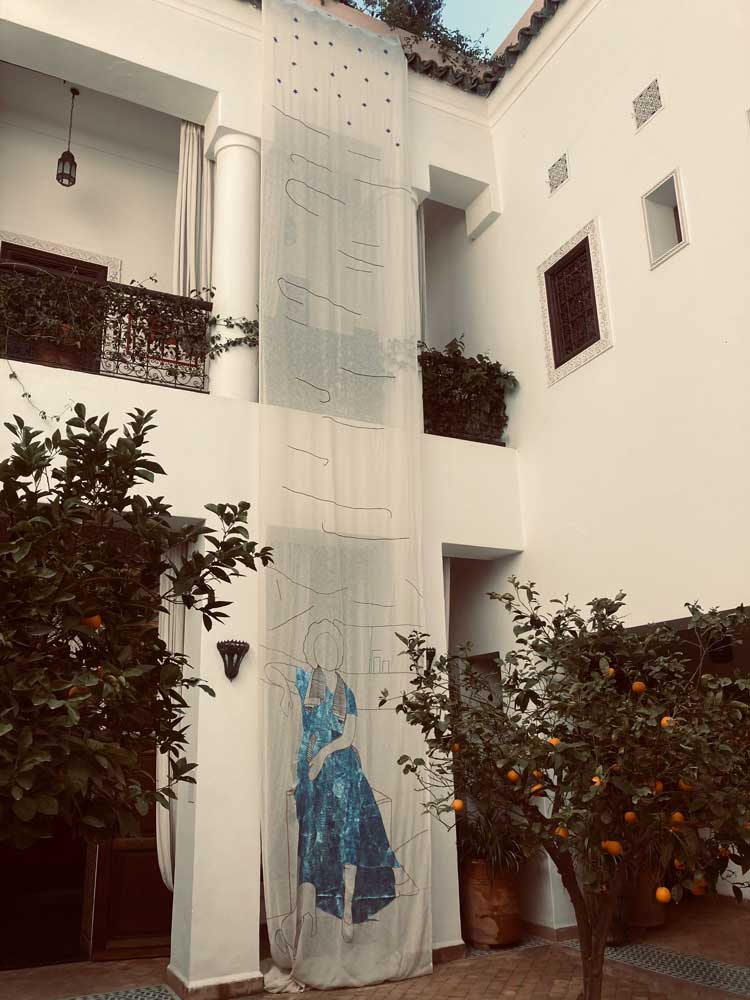
Margaux Derhy. Fibi, Lydia, et les autres, 2024. Installation, hand-embroidered cotton and sabra thread on 15m of linen gauze. Photo: Allie Biswas.
During the fair (29 January to 2 February), IZZA opened a group exhibition of nine artists, most of whom are Moroccan or French-Moroccan and working in the country. Operating as a design-focused riad within a residential neighbourhood just north of the famous Jemaa el-Fnaa square, IZZA also functions as a meeting space for artists and has a collection of more than 300 artworks, several of which are displayed around the building. Line(s) of Desire, organised by Achraf Remok, a Rabat-based curator, uses the premises to full effect. Amina Agueznay, who is known for preserving regional weaving traditions through her work with local craftspeople, presents Reg (2024), a small installation of stones collected from the Souss-Massa area in the south of Morocco, each one fitted into a hand-crocheted “nest” measuring just a few centimetres each way. Creating a landscape of its own on a wooden bench next to the hotel’s pool, it sets the tone for an exhibition that foregrounds the tactility and malleability of materials, as well as the seamless interaction between a (textile) art object and its (everyday) setting.
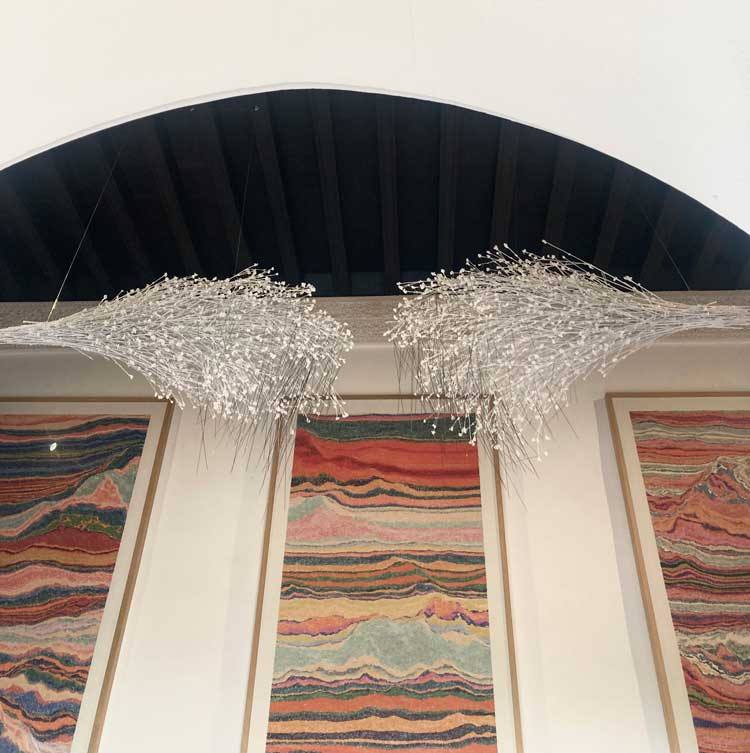
Safaa Erruas. Les deux bouquets, 2020/2021. Resin and metal needles, 90 x 200 cm. Photo: Allie Biswas.
Hanging in the courtyard of IZZA is a 15-metre-long vertical embroidery by Margaux Derhy. Featuring the outline of an elusive figure – a faceless woman wearing a bright-blue dress – the pale gauze on to which the artist has sewn blends into the white wall behind it. Women are the protagonists of Derhy’s compositions, both in the narratives she depicts and the making of the work (the embroidery studio she runs in Massa employs 10 local women from the town). Nearby, nestled at the top of a doorway, like mistletoe at Christmas, were two bristly bunches made from resin and metal needles (Les Deux Bouquets, 2020/2021). This white sculpture is typical of the work of Safaa Erruas, which is focused on the coexistence of rounded and sharp materials.
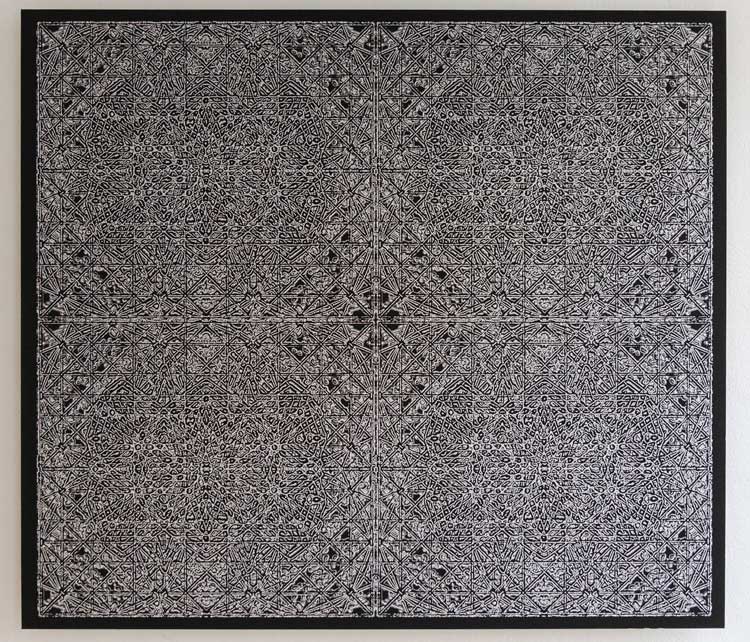
Nassim Azarzar. Stèle, 2018. Pigment print on cotton, laminated on aluminum, 100 x 88 cm. Photo: Ayoub Al Bardii.
Other artists in the exhibition also consider the technical possibilities of soft materials, resulting in striking graphics developed from complex processes. A black-and-white “painting” by Nassim Azarzar, whose mural for The Showroom in London is currently on view, is made from pigmented print applied to cotton and then laminated on aluminium. Digital interventions play a part here: the artist often reimagines Islamic patterns using algorithms. Claire Williams also explores how technology might impact the production of materials: her knitted rectangles arise from “sound knitting” – a process that involves a computer retransmitting the electromagnetic signals sensed by a knitting machine’s antenna, meaning that sound frequencies are turned into knitted stitches. The resulting images of these marks resemble aerial views of various terrains.
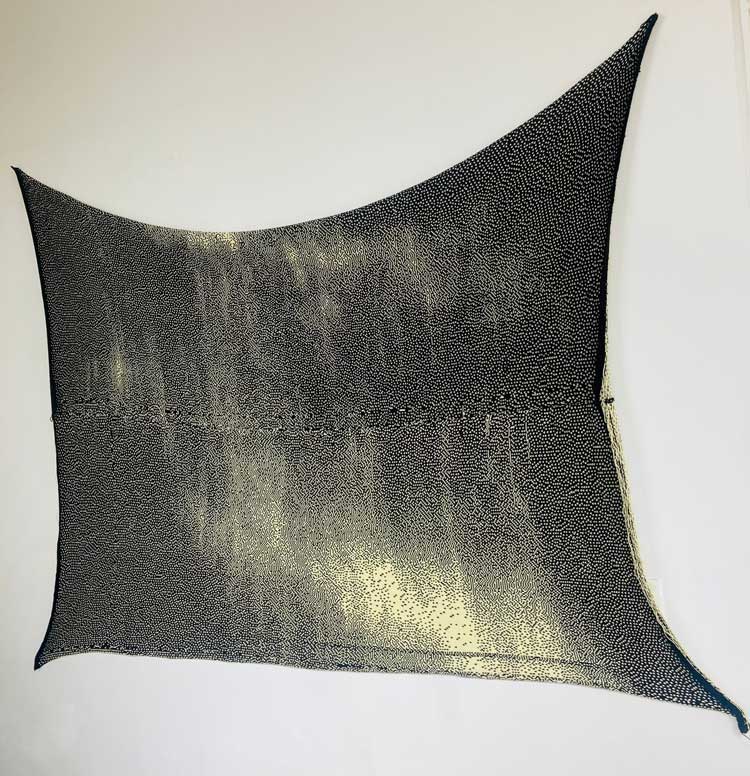
Claire Williams. 203° 22' 29.86" 0° 00' 00.00" - solar flare 12:47:05 2020-10-16, 2020. Knitted Spectrogrammes / Spectres textiles series. Collaboration with Maurin Donneaud. Photo: Allie Biswas.
Displaying art within a hospitality setting was prevalent during 1-54; the fair itself was held at the five-star La Mamounia, and El Fenn hosted a display of sculptures by Bouchra Boudoua. It was refreshing to view art outside the usual gallery context, and, as the exhibition at IZZA made evident, this can even be preferable.
• Line(s) of Desire is hosted at IZZA in partnership with the French Embassy of Morocco, the French Institute of Morocco, and the Kalhath Foundation in India.
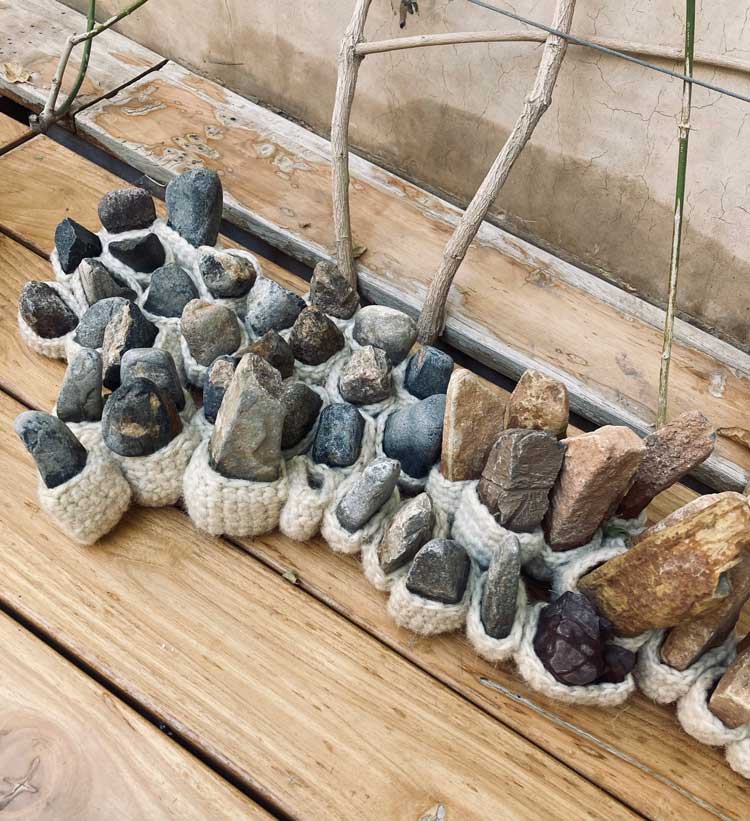
Amina Agueznay. Reg, 2024 (detail). Installation, Natural undyed wool, stones from Souss Massa, cotton thread. Hand crochet and sewing, variable dimensions. Photo: Allie Biswas.